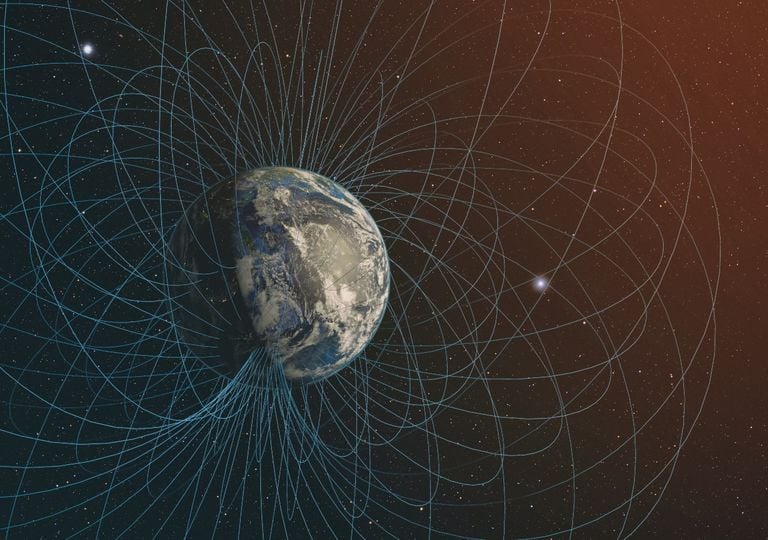
In early 2016, several aerospace engineers in Japan observed their precious satellite, launched 5 weeks earlier, and that was getting out of hand. They expected the spacecraft to observe black holes, galaxy clusters, and other high-energy features, but a series of events, starting with the spacecraft’s encounter with the magnetic field anomaly. of the South Atlantic, turned out to be the loss of the project.
Earth’s magnetic field has a weak point which is located over South America and the southern Atlantic Ocean. This area is known as the South Atlantic Anomaly, and although it has no effect on the population, it brings serious headaches to aerospace science. When a satellite passes through this magnetic anomaly, it is bombarded much more intense radiation than anywhere else in orbit. And there is reason to believe that this breach in Earth’s magnetic field is only getting bigger.
Video shows Japans troubled Hitomi spacecraft tumbling wildly through space: https://t.co/Emkh454v0M pic.twitter.com/84XLBkPABd
— National Geographic (@NatGeo) March 28, 2016
In the case of the Japanese Hitomi spacecraft, while passing through the anomaly, the system that controlled the orientation of the satellite failed while spinning to observe a new cluster of stars. The maneuver triggered a series of problems. The satellite broke into 11 pieces.
Many satellites orbiting near Earth necessarily pass through the anomaly several times a week. It is estimated that the Hubble Space Telescope spends 15% of its life in this region, and when that happens, it regularly turns off its light sensitive cameras to avoid damage. Some instruments, like NASA’s Ionospheric Connection Explorer, also deactivate electrical components with each pass.
Predicting changes in the magnetic field remains a challenge, and predicting its evolution is not possible beyond the near future. This is why scientists continue to investigate to understand how the Earth’s magnetic field will change. Without knowledge of the magnetic field, satellites could be lost and tools that rely on careful magnetic models for navigation would give false information when going through one of these anomalies.
A growing anomaly
Researchers discovered the South Atlantic anomaly in 1958 when satellites first started measuring radiation in space, although they believe it has been around since the early 19th century or before. Now the region is well known and featured prominently in most models, and the real debate revolves around what it will do in the future.
The South Atlantic anomaly is moving west (about 1 ° longitude every 5 years) and slightly north. Over time, the target of the anomaly will pass through Argentina, Bolivia, Brazil, Chile and Paraguay, according to information published in EOS magazine.
In an area stretching from Africa to South America, Earths magnetic field is gradually weakening. Scientists are using data from @esa_swarm to improve our understanding of this area known as the South Atlantic Anomaly https://t.co/ZqTBA9DmX4 pic.twitter.com/klc5SS7zYo
– ESA (@esa) May 20, 2020
A forecast by NASA scientist Weijia Kuang and Professor Andrew Tangborn of the University of Maryland in Baltimore County shows that in addition to migrating west, the anomaly is growing. In five years, the area below a field strength of 24,000 nanoteslas (about half of normal magnetic force) will increase by about 10% from 2019 values.
Read also – Climate: France by 2020, a weather forecast
Fortunately, it cannot harm surface life, Kuang said. “But if it continues to weaken over time, it could eventually impact us.” The hole in our field would expose us to high-energy particles that could tear down power grids and remove protective gases from our atmosphere.
– .

